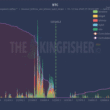IBM’s announcement of the world’s first fault-tolerant quantum computer is poised to reshape the timeline for quantum threats to Bitcoin and digital security. Dubbed IBM Quantum Starling, this system could achieve quantum operations once believed to be decades away—potentially endangering blockchain cryptography sooner than expected.
Quantum Computing Enters a New Era With IBM Starling
Quantum computers have long been considered a distant threat to cryptocurrencies due to their error-prone nature. However, IBM’s unveiling of its Starling system—a 200-qubit, error-corrected quantum computer targeting 100 million operations—is set to debut by 2029 and may expedite this risk. Unlike its predecessors, Starling harnesses advanced error correction and real-time recovery methods, allowing it to run complex calculations that competitors cannot. Housed at IBM’s Poughkeepsie data center, Starling marks a critical milestone in IBM’s comprehensive quantum roadmap extending through 2033.
How Fault Tolerance Changes the Quantum Game
The ability of quantum computers to process information in parallel opens remarkable possibilities, but their extreme sensitivity to environmental noise has kept them from reaching their disruptive potential. Fault tolerance—made possible by IBM’s use of Bivariate Bicycle low-density parity-check (LDPC) codes—dramatically reduces the number of physical qubits needed for robust error correction, by as much as 90% over older methods. Starling will further integrate hardware-based error detection, utilizing FPGAs and ASICs for near-instantaneous error response, pushing quantum systems closer to real-world applications like breaking cryptographic codes and simulating complex molecular behavior.
Key Stats & Figures
- Targeted Qubits: 200 logical, error-corrected qubits in Starling, scalable to 1,080 qubits system-wide by 2027 with modular designs
- Quantum Operations: Starling aims for 100 million quantum operations per run—a significant leap for industry benchmarks
- Error Correction Efficiency: Up to 90% reduction in physical qubits required through Bivariate Bicycle LDPC codes
- Timeline: Prototype of fault-tolerant system expected by 2028, full-scale deployment by 2029, with quantum roadmap extending through 2033
Inside IBM’s Quantum Roadmap: From Nighthawk to Starling
IBM’s stepwise plan envisions steady advances each year. By 2025, the 120-qubit Nighthawk processor will offer deeper circuit processing, aided by new software like Qiskit’s dynamic circuits and HPC integration. In 2026, the Kookaburra processor will introduce modular quantum memory and logic building blocks. The 2027 roadmap scales up further with chip-to-chip coupling and entanglement protocols using the Cockatoo processor—sidestepping the technical brick wall of massive single chips. Starling’s anticipated 2028 prototype is set to unify these innovations into a commercially relevant, fault-tolerant quantum powerhouse.
A Closer Look at Security: Bitcoin, Blockchains, and the Quantum Horizon
Industry figures remain divided on the timeline and impact. MicroStrategy co-founder Michael Saylor recently minimized quantum threats to Bitcoin, suggesting that other digital systems are more vulnerable in the near term. However, cryptography experts like Professor David Bader emphasize the paradigm shift fault tolerance brings—noting that once quantum computers can reliably scale into the millions of qubits, cryptographic safeguards around blockchain networks could be at risk. Still, widespread quantum attacks on Bitcoin remain years away; Bader cautions that although blockchains are not in imminent danger, the need for quantum-resistant protocols is growing as technology races ahead.
Conclusion: What This Means for the Market
IBM’s Starling system signals a rapid evolution in quantum computing, with the potential to redefine digital security and upend trust in current cryptographic systems, including those securing Bitcoin. The next decade is likely to see parallel advances in both quantum hardware and blockchain defenses, making vigilance and innovation essential for cryptocurrency stakeholders.
